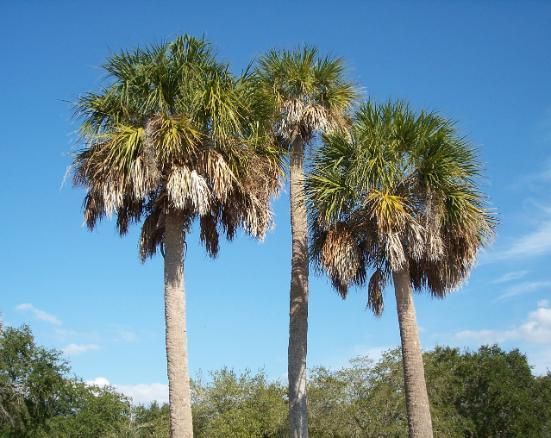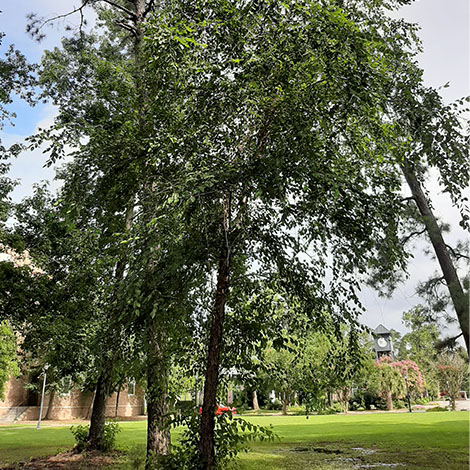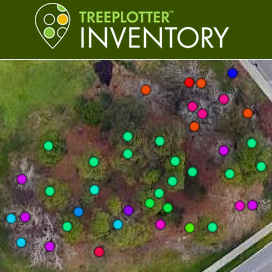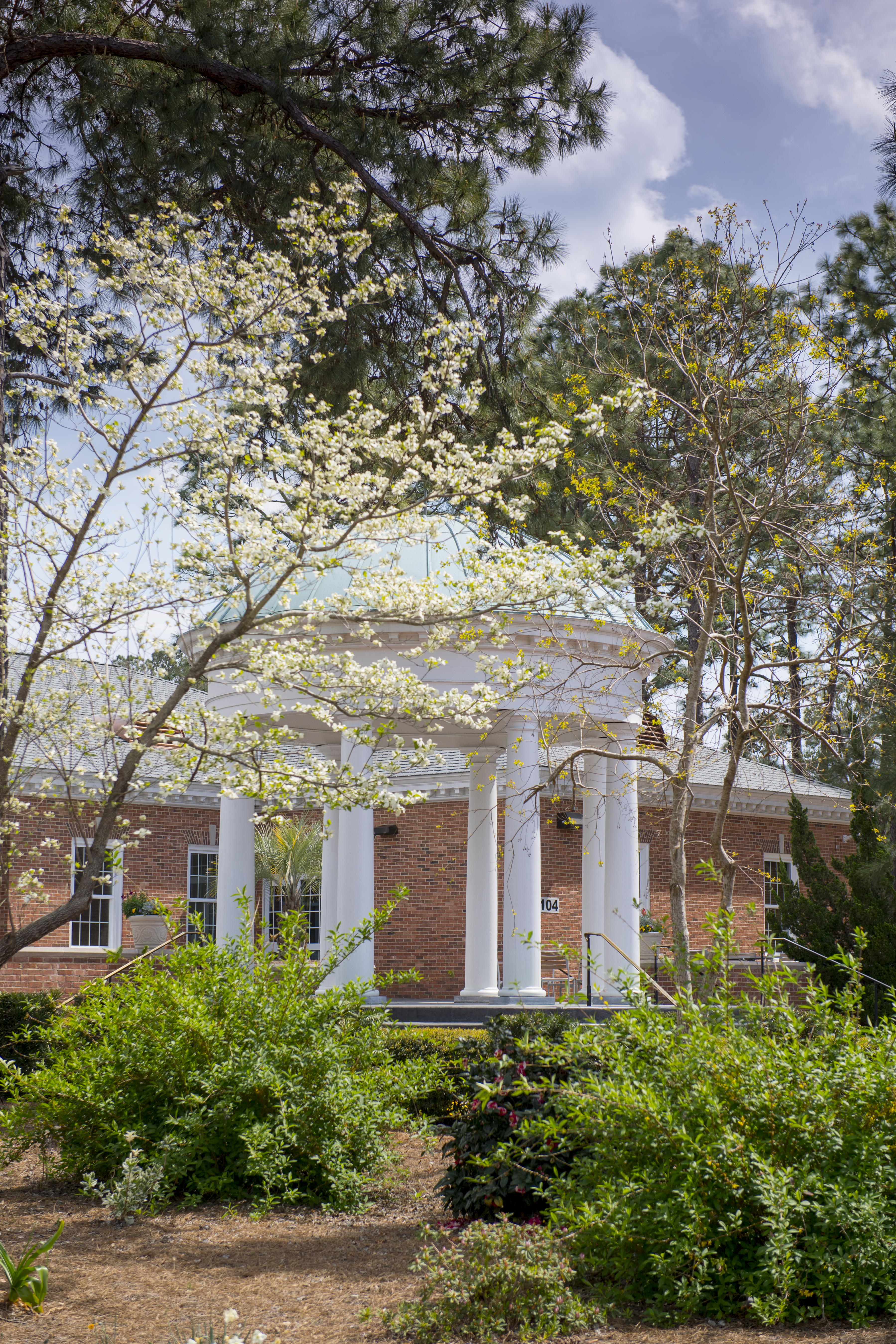CCU Arboretum
Cabbage Palmetto

Common Name: Cabbage Palmetto, Sabal Palmetto
Scientific Name: Sabal palmetto
Species Range: This palmetto is native to the southeastern United States ranging from southeastern North Carolina to Georgia and all throughout Florida. It can be found along the edges of brackish marshes, Coastal Plains, and sandy soils along the coast.
Growth Characteristics: Growing up to 65 feet tall with an unbranched trunk, the leaves of this palmetto are fan-like and span 4-7 feet long. Instead of typical bark, this tree has a fibrous sheath and the bases of the leaves grow in a crisscross pattern on the trunk indefinitely, scarring the trunk as the tree grows, making it rough. Yellowish white flowers appear in May-July and grow in clusters up to 6 feet tall. The drupe fruit matures in October-November and is a shiny black color growing about ½ inch long.
Wildlife Value: Robins, raccoons, and bees use the fruit and flowers as a food source.
Ecosystem Service Value: The states of South Carolina and Florida claim the sabal palmetto as their state tree. It is also used widely as an ornamental tree as it can adapt to many soil types, withstand strong winds, and can grow in a variety of light conditions.
Threats: It is threatened by a couple diseases such as the Texas Phoenix Palm Decline, Lethal Bronzing, Ganoderma Butt Rot, etc.
Species profile by Billie Rogers
References:
Kirkman, L. Katherine., et al. Native Trees of the Southeast: An Identification Guide. Timber Press, 2007.
“Sabal palmetto: Sabal or Cabbage Palm.” University of Florida IFAS Extension, https://edis.ifas.ufl.edu/st575. Retrieved November 14, 2020.








